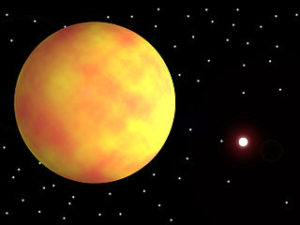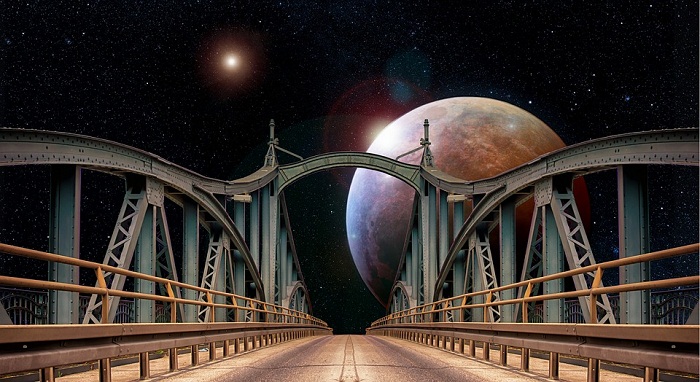
NASA scientists have developed a model to estimate oxygen escape on planets around red dwarfs.
Scientists usually focus on habitable zones around stars to search for life beyond Earth. Habitable zones are those regions around stars which are believed to have suitable conditions to allow liquid water to get pooled on the surface of a planet.
Last month, reports surfaced that astronomers are focusing on an exoplanet Wolf 1061c to look for signs of life in nearby star systems. Wolf 1061 is a red dwarf star located just 126 trillion kilometers (78.3 trillion miles), or 14 light years, from Earth. This nearby star to our Sun has three planets orbiting it. Wolf 1061c, which orbits in the habitable zone of its host star, was discovered by researchers at the University of New South Wales in Australia in 2015.
Traditionally, scientists have considered only two factors—the amount of heat and light emitted by a star—to determine its habitable zone. Theoretically, the habitable zones of a star more massive than our Sun should be farther out because that star would produce more light and heat compared to Earth’s sun. Similarly, the habitable zone of a cooler star must be located closer to it. However, a new study by NASA suggests that stellar eruptions could also play a part in defining and determining the habitable zone of a star. A stellar eruption is a space event in which huge amounts of stellar material and radiations are spewed out into space by a young red dwarf star. According to this study, frequent stellar activities could destroy an exoplanet’s atmosphere through oxygen loss, and therefore it is an important factor in defining the habitable zone of a dwarf planet.
“If we want to find an exoplanet that can develop and sustain life, we must figure out which stars make the best parents,” said Vladimir Airapetian, lead author of the paper and a solar scientist at NASA’s Goddard Space Flight Center in Greenbelt, Maryland.
“We’re coming closer to understanding what kind of parent stars we need.”
Scientists claim that one possible impact of stellar eruptions (including flares and coronal mass ejections) could be atmospheric erosion, in which atmospheric molecules, such as hydrogen and oxygen are dragged out into space by high-energy particles.
Airapetian and his team have now developed a new model that takes this effect into account while defining the habitable zones for red dwarf stars—the smallest, coolest and most numerous stars in the universe.
“On the downside, red dwarfs are also prone to more frequent and powerful stellar eruptions than the sun,” said William Danchi, a Goddard astronomer and co-author of the paper.
“To assess the habitability of planets around these stars, we need to understand how these various effects balance out.”
According to scientist, the age of a star is another important factor in defining the habitability of a star.
“When we look at young red dwarfs in our galaxy, we see they’re much less luminous than our sun today,” Airapetian said.
“By the classical definition, the habitable zone around red dwarfs must be 10 to 20 times closer-in than Earth is to the sun. Now we know these red dwarf stars generate a lot of X-ray and extreme ultraviolet emissions at the habitable zones of exoplanets through frequent flares and stellar storms.”
The study reveals that with superflares, extreme ultraviolet emissions and high-energy X-ray break molecules into atoms and cause atmospheric gases to ionize. During ionization, electrons are knocked off from atoms, and because electrons are much lighter, they escape gravity’s pull and move into space. As more electrons are generated, they start attracting positively charged ions, thus causing ions to escape from atmosphere.
“We know oxygen ion escape happens on Earth at a smaller scale since the sun exhibits only a fraction of the activity of younger stars,” said Alex Glocer, a Goddard astrophysicist and co-author of the paper.
“To see how this effect scales when you get more high-energy input like you’d see from young stars, we developed a model.”
The new model created by scientists estimates the oxygen escape on planets around red dwarfs. The model suggests that violent storms on young red dwarfs produce enough high-energy radiation to enable the escape of oxygen and nitrogen from the atmosphere.
“The more X-ray and extreme ultraviolet energy there is, the more electrons are generated and the stronger the ion escape effect becomes,” Glocer said. “This effect is very sensitive to the amount of energy the star emits, which means it must play a strong role in determining what is and is not a habitable planet.”
The detailed findings of the study have been published in the Astrophysical Journal Letters.

